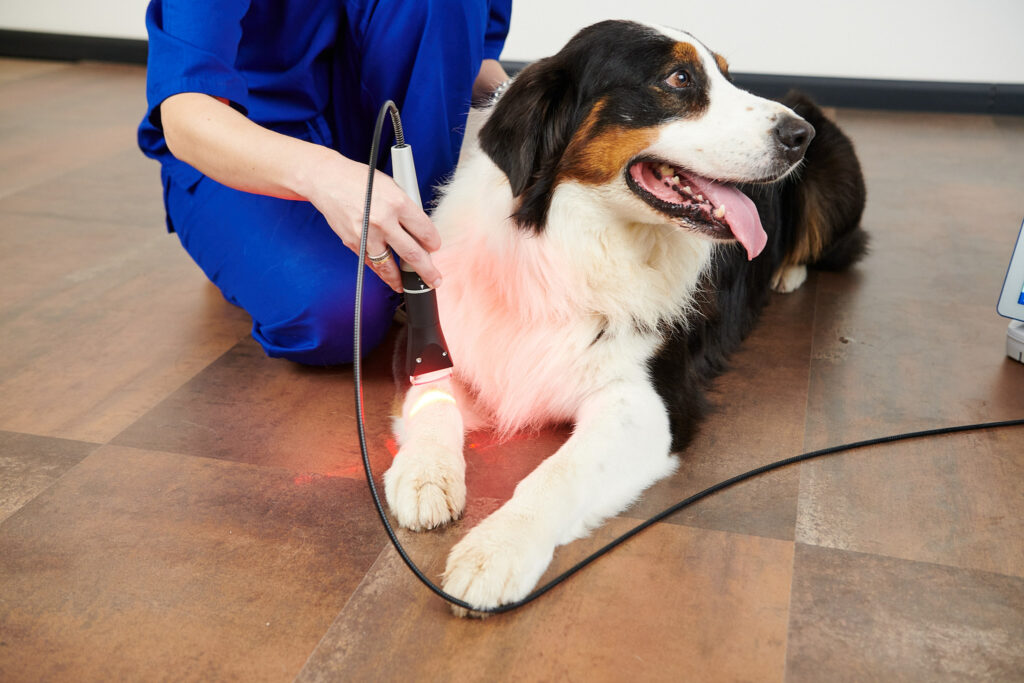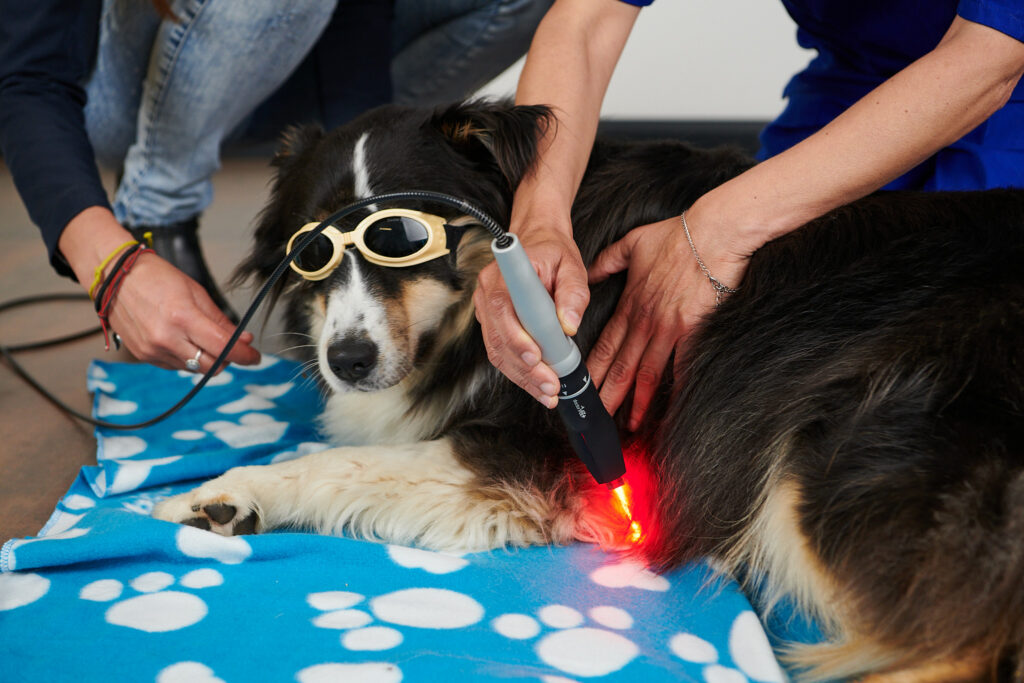Veterinary medicine is experiencing significant growth, which is why more veterinarians are looking for other therapeutic options to help improve quality of life for our patients. Rehabilitation and sports medicine is one specialist field that is developing particularly fast.
Laser therapy is a physical agent that has improved greatly over the last 15 years, with equipment that is highly suited and adapted to this speciality. Many expert colleagues and specialists already have laser therapy equipment as they are fully aware of the benefits to be gained from laser therapy in veterinary medicine.

Generally speaking, the goals in terms of rehabilitation are1:
The basic goal is to shorten recovery times while restoring maximum functionality in wounded tissues. Laser therapy can be thought of as helping in the recovery of numerous general goals for rehabilitation, potentially being used in the various stages of tissue recovery.
Remember, laser therapy can produce an analgesic effect and control inflammation, as well as participate in the repair of various tissues through its biostimulation effect2. Hence, laser therapy is a fundamental physical agent in physiotherapy and veterinary rehabilitation. Furthermore, considering how easy it is to apply and the short treatment times, it is a highly valuable technique causing very little stress on our patients.
Many patients require multimodal treatment, including pharmacology, rehabilitation, nutrition and regenerative medicine3. We can also help several of the physical agents within the field of rehabilitation, as well as active and passive kinesiotherapy for recovery by the patient. Laser therapy can be combined with different physical agents to enhance and accelerate the overall goals of rehabilitation. In this regard, it is very important to highlight the need for correct knowledge of the various physical agents, the pharmacological treatments and the general condition of the patient by performing a correct examination and functional assessment to establish the best therapeutic options in each situation.
The precise moment when rehabilitation should begin is often not known. It should be started as soon as possible, potentially even before the surgery to reduce inflammation and achieve proper tissue oxygenation. Laser therapy can also be applied during surgery (in non-contact mode) as well as immediately after surgery4. This will achieve control over the repair process in the tissues affected by the wound, an analgesic effect and a return to normality.

Seeing is believing!
Book a demo now to learn how DoctorVet works!
Sports medicine is another field in which laser therapy can be used. The fundamental goal for these patients is to prevent injury. Laser therapy can be applied before competition to achieve correct tissue oxygenation and correct stimulation of microcirculation at a muscular level.
After competition, it can be used to treat possible micro-trauma that might lead to an injury in the long term. Between competitions, it is highly suited to the treatment of trigger points.
DoctorVet is an easy-to-use therapeutic laser classified by species with various protocols for each one of the joints and five options based on size. It also has a protocol for inflammation and general pain.
In post-op situations, it can be useful in the treatment of wounds by using the protocol for incisions. It has a number of different hand tools, with the massage tool being highly useful in enhancing the massage effects while ensuring our patients benefit from the effects of laser therapy. This option is highly beneficial in the treatment of trigger points.

Via dell’Impresa, 1
36040 Brendola (VI)
VAT 02558810244
C.R. VI 240226
© Copyright 2016-2021 LAMBDA S.p.A. | Privacy Policy